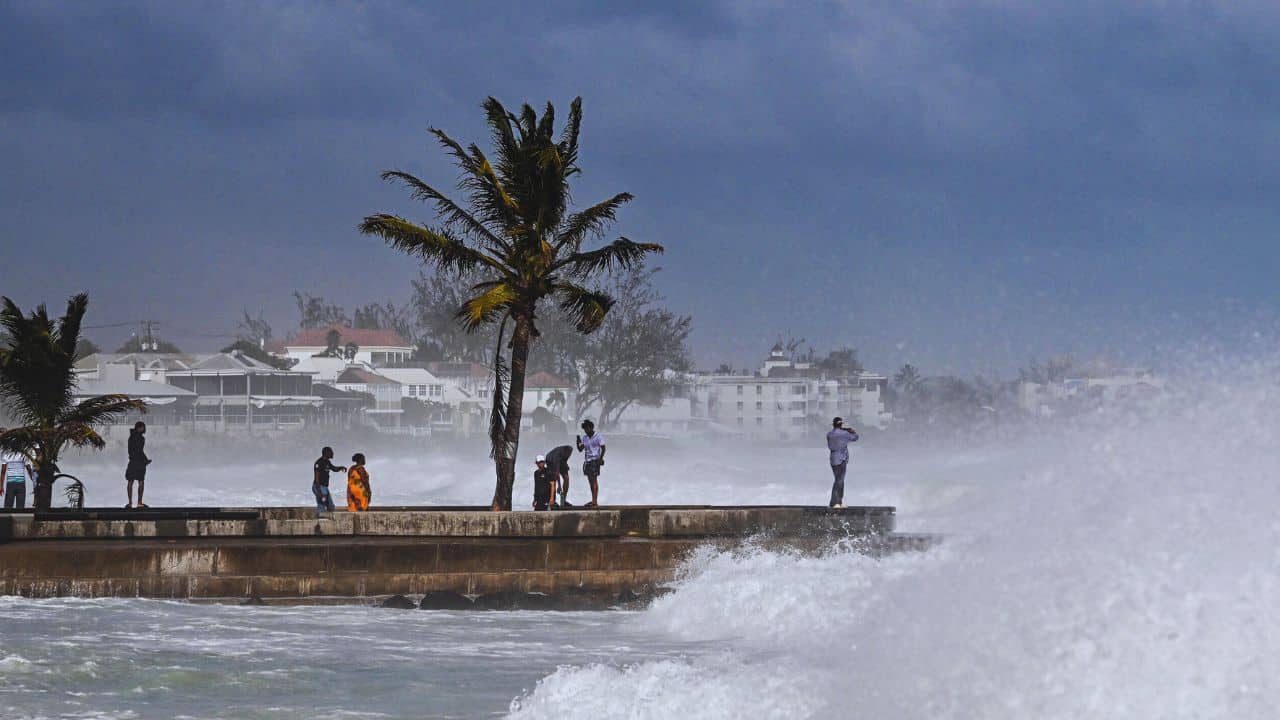Hurricane Beryl surged through open waters on Tuesday, strengthening into a powerful Category 4 storm. The hurricane is currently on a path towards Jamaica after earlier crossing islands in the southeast Caribbean, where it has already resulted in the tragic loss of at least six lives.
Hurricane Warnings and Watches in Effect
The National Hurricane Center has issued a hurricane warning for Jamaica, Grand Cayman, Little Cayman, and Cayman Brac. Although Beryl is losing some of its intensity, it is still forecasted to be near major-hurricane strength when it passes near or over Jamaica early on Wednesday. The storm is expected to approach the Cayman Islands on Thursday and make its way to Mexico’s Yucatan Peninsula by Friday.
In addition to Jamaica and the Cayman Islands, a hurricane watch has been put in place for Haiti’s southern coast and the east coast of the Yucatan Peninsula. Belize has also issued a tropical storm watch, which extends from its border with Mexico to Belize City.
Beryl’s Meteorological Journey
Late Monday, Hurricane Beryl set a record by becoming the earliest storm to escalate into a Category 5 hurricane in the Atlantic this season. The hurricane reached its peak with winds of 165 mph (270 kph) on Tuesday before weakening slightly to a still-formidable Category 4. By Tuesday night, Beryl was situated about 300 miles (480 kilometers) east-southeast of Kingston, Jamaica, with top winds reaching 150 mph (240 kph) and moving west-northwest at a speed of 22 mph (35 kph), according to the National Hurricane Center.
Jamaica Braces for Impact
As Hurricane Beryl approaches, it is expected to bring life-threatening winds and storm surge to Jamaica. Local officials have been proactive in warning residents in flood-prone areas to prepare for potential evacuations.
Prime Minister Andrew Holness addressed the nation on Tuesday, urging all Jamaicans to take the hurricane threat seriously. “I am encouraging all Jamaicans to take the hurricane as a serious threat,” Holness stated in his public address. “It is, however, not a time to panic.”
In Miami, National Hurricane Center Director Michael Brennan emphasized that Jamaica appears to be in the direct path of Beryl. “We are most concerned about Jamaica, where we are expecting the core of a major hurricane to pass near or over the island,” Brennan said during an online briefing. He advised residents to find a safe place to ride out the storm by nightfall on Tuesday and to be prepared to stay in that location through Wednesday.
Expected Hazards and Precautions
Jamaica is bracing for a storm surge of 6-9 feet (1.8 to 2.7 meters) above typical tide levels, as well as heavy rainfall that could lead to significant hazards. Brennan warned, “This is a big hazard in the Caribbean, especially with the mountainous islands. This could cause life-threatening flash floods and mudslides in some of these areas.”
Moreover, a tropical storm warning is in place for the entire southern coast of Hispaniola, an island shared by Haiti and the Dominican Republic. This indicates that tropical storm conditions, including high winds and heavy rain, are expected in these regions as well.
Historical Context and Community Preparedness
Hurricane Beryl’s rapid intensification and its early development into a Category 5 hurricane have been notable. This historical context underscores the unpredictable and often dangerous nature of hurricane seasons in the Atlantic. Communities across the Caribbean are reminded of the importance of preparedness and the need to heed official warnings and evacuation orders.
Local governments, emergency services, and community organizations in the affected areas are working tirelessly to ensure that residents are informed and safe. Evacuation centers are being prepared, supplies are being distributed, and emergency response teams are on high alert.
Residents are advised to secure their homes, stock up on essential supplies such as water, food, medications, and batteries, and to have an emergency plan in place. Those in low-lying or flood-prone areas are especially urged to evacuate to higher ground if instructed to do so by authorities.
As Hurricane Beryl continues its approach, the emphasis remains on vigilance and preparedness. The potential impact of this powerful storm cannot be underestimated, and taking proactive measures can save lives. The collaborative efforts of government officials, emergency responders, and communities will be crucial in mitigating the effects of Hurricane Beryl and ensuring the safety and well-being of those in its path.






































